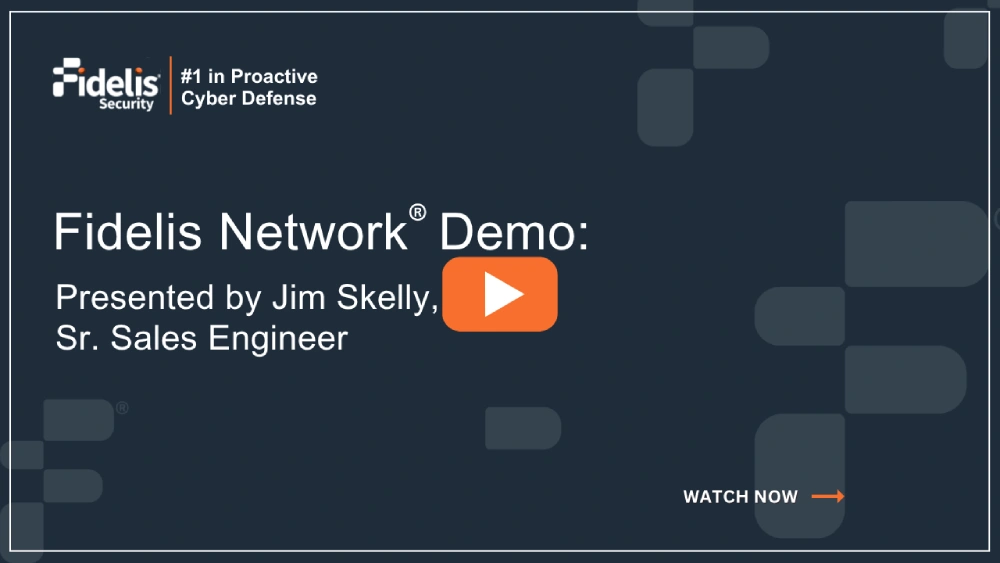A Secure Web Gateway (SWG) is a security system that filters internet traffic to answer the question, “What is secure web gateway?” It protects users from harmful sites and ensures policy compliance. SWGs stand between users and the web, blocking threats like malware and ransomware while enforcing organizational rules. This article will detail how SWGs function, their key features, and the benefits they offer.
What is SWG?
Secure Web Gateways (SWGs) act as a critical filter between users and the internet, ensuring that only safe and compliant web requests are processed. The primary purposes of an SWG security include:
- Meticulously filtering and inspecting web traffic
- Protect users from harmful websites
- Ensuring compliance with internal and regulatory guidelines
- Blocking access to malicious websites
- Preventing data breaches by enforcing acceptable use policies
In essence, SWGs are the gatekeepers of secure web access.
Implementing SWGs allows organizations to control internet resource access and utilization, reducing the risk of data mishandling or exfiltration. This practice helps maintain regulatory compliance and ensures adherence to the organization’s internet usage policies.
Moreover, SWGs play a crucial role in protecting users from web-based threats such as malware and ransomware, making them an essential component of modern network security.
How Does Secure Web Gateway Work?
At its core, a Secure Web Gateway (SWG) functions as an intermediary between users and the internet, filtering web requests to enforce security policies and ensure safe browsing. When a user attempts to visit a website, the SWG steps in to inspect the outgoing request, checking the destination URL, user identity, and content type. This comprehensive inspection ensures that only safe and compliant web requests are allowed through. Additionally, incoming responses from the internet are scrutinized by the SWG before they reach the user, further safeguarding against potential threats. A web proxy can also be utilized to enhance this process.
A key aspect of how Secure Web Gateways solutions work is their ability to perform HTTPS inspection. This involves decrypting encrypted web traffic, inspecting it for threats, and then re-encrypting it before passing it on to the user. This process is crucial for identifying malicious content hidden within encrypted sessions, which are increasingly used by cybercriminals to bypass traditional security measures. By inspecting both outgoing and incoming traffic, SWGs can detect and block a wide range of web-based threats, thereby enhancing overall network security.
Another significant function of SWGs is their ability to apply user identity-based controls:
- Identifying users and applying role-based controls
- Enforcing acceptable use policies tailored to organizational needs
- Maintaining a granular web access control
- Ensuring a secure and compliant browsing environment
- Reducing the risk of data breaches and other security incidents
Fidelis Network® enhances this process by enabling deep session inspection and encrypted traffic analysis, helping organizations detect advanced threats that hide within HTTPS traffic.
- Detect threats in real-time
- Analyze encrypted traffic with precision
- Automate investigation and response

Key Features of Secure Web Gateways
Gateway Security (SWGs) come equipped with a variety of features designed to provide comprehensive protection against web-based threats. These features include:
- Full visibility of web traffic
- Anti-virus protection
- Decryption
- Content control.
Leveraging these capabilities, SWGs provide a robust security solution that effectively safeguards users and data from numerous online threats.
URL Filtering
One of the most critical features of Secure Web Gateways (SWGs) is URL filtering, which includes:
- Checking requested URLs against real-time threat intelligence to block access to known malicious websites.
- Filtering web traffic based on predefined policies to control user access to web resources.
- Ensuring that only safe and compliant websites are accessible.
- Blocking access to harmful websites.
- Restricting content based on user roles and responsibilities, thereby enhancing overall network security.
URL filtering provides organizations with granular control over internet access, allowing them to manage user activity effectively. Key aspects include:
- Categorizing websites and applying specific filters
- Preventing access to inappropriate websites or non-work-related content
- Improving productivity
- Reducing exposure to malicious web content through Secure Web Gateways (SWGs)
This feature is especially useful in environments where public internet usage needs to be tightly controlled to ensure compliance with corporate policies and regulatory policy compliance and control access to network traffic through a proxy server.
With real-time threat intelligence, platforms like Fidelis Network® make URL filtering more effective by correlating web activity with behavioral indicators of compromise.
Threat Prevention
Threat prevention is another cornerstone feature of Secure Web Gateways (SWGs). Blocking newly created malicious pages at the point of request, SWGs effectively detect and mitigate zero-day phishing threats. Advanced threat protection techniques such as signature-based detection, machine learning, and sandboxing are employed to analyze web traffic and identify potential threats. This comprehensive approach ensures that even the most sophisticated threats are detected and neutralized before they can cause harm.
Decrypting and inspect traffic HTTPS traffic is essential for uncovering hidden threats such as malware, phishing sites, phishing attacks, and command-and-control activities. Targeting traffic that seeks vulnerabilities in software or web applications, SWGs thwart potential exploits and injection attacks. These capabilities are crucial for maintaining a secure browsing environment, as they reduce the risk of data breaches and other security incidents by enforcing stringent security policies and blocking malicious code detection.
Data Loss Prevention (DLP)
Data Loss Prevention (DLP) features within Secure Web Gateways (SWGs) are designed to monitor web traffic and prevent the unauthorized transfer of sensitive data. Enforcing acceptable use policies and applying specific controls, SWGs protect sensitive information from exposure through web channels. This is particularly important in industries where data privacy and regulatory compliance are paramount.
DLP features in SWGs work by detecting and preventing unauthorized data transfers, thereby reducing the risk of data breaches. Continuously monitoring web traffic for signs of data exfiltration, SWGs consistently protect against data loss, ensuring sensitive information remains secure.
These capabilities are essential for maintaining the integrity and confidentiality of corporate data, especially in today’s highly regulated and security-conscious environment.
Fidelis Network® supports data loss prevention by providing visibility into web sessions, file movements, and user behavior—helping detect and block potential data exfiltration.
Benefits of Implementing Secure Web Gateways
Implementing Secure Web Gateways (SWGs) offers numerous benefits that significantly enhance an organization’s overall network security:
- Protects users from web-based threats by preventing access to harmful websites and applications.
- Reduces the external attack surface.
- Lowers the risk of cyber-attacks and data breaches through a proactive approach.
Another key benefit of deploying SWGs is the ability to monitor and control the transfer of sensitive information, thereby mitigating the risks of data leaks. Filtering internet traffic and enforcing corporate policies, SWGs offer tailored security measures addressing the specific needs of different industries. This comprehensive protection ensures that organizations can maintain compliance with regulatory requirements while safeguarding their digital assets from a wide range of online threats.
- Secure users, data, and workloads
- Gain visibility across hybrid environment
- Align Zero Trust with business goals

Addressing Deployment Challenges
Deploying Internet Gateway security (SWGs) comes with its own set of challenges that organizations need to address. One of the primary challenges is the complexity of integrating SWGs into existing security systems, which can complicate network management. Additionally, peak traffic periods can lead to delays in file access as SWGs scan and approve files, potentially disrupting workflows.
SWGs have several limitations and challenges:
- They often limit the file sizes they can process, which can hinder productivity.
- Maintaining SWGs requires significant resources for updates and threat intelligence, adding to the operational burden.
- Certain file types may be restricted by SWGs, potentially impacting the efficiency of certain business processes
Despite these challenges, the benefits of deploying SWGs far outweigh the drawbacks, making them an essential component of modern security architectures.
Solutions like Fidelis Network® address these challenges through automated policy enforcement and adaptive inspection, making SWG security deployment more manageable at scale.
What is the Purpose of a Secure Gateway
Secure Web Gateways solutions play a pivotal role in modern security architectures, particularly within the Secure Access Service Edge (SASE) framework. Serving as foundational elements of SASE, SWGs provide secure network access and manage internet traffic. This integration streamlines security and connectivity, offering unified inspection and policy enforcement for internet access security.
Organizations are increasingly adopting cloud-native secure network gateways to enhance operational efficiency and reduce risk and complexity. SWGs provide visibility into internet traffic and help manage the risks associated with unmanaged access, including those related to cloud security, security rules, and cloud access security broker.
Inspecting HTTPS connections, SWGs reveal hidden risks from encrypted web traffic, enhancing overall network security. This combined approach of multiple security solutions ensures comprehensive protection against a wide range of web-based threats.
Securing Remote Workers and Branch Offices
As remote workforces and branch offices become more prevalent, securing these decentralized environments has become a top priority for organizations. Secure Web Gateways (SWGs) offer consistent security levels for remote users outside the corporate network, providing protection and visibility into web traffic. Cloud-delivered SWG security inspect and filter traffic without routing it through a central location, minimizing latency and enhancing user experience.
The transition to cloud-delivered SWGs supports a more decentralized approach to network security, allowing for real-time inspection of web traffic for remote users without directing it through a central data center. This approach is particularly beneficial for branch offices lacking on-site infrastructure, as it enables them to easily scale and adapt to the needs of remote and hybrid environments, embodying the principles of cloud delivered architecture.
Providing consistent protection across all locations, SWG cybersecurity help organizations maintain a secure and compliant browsing environment for all users.
Choosing the Right Secure Web Gateway for Your Organization
When selecting a Secure Web Gateway (SWG) for your organization, it is crucial to consider various factors such as security goals, operational needs, future plans, and alignment with IT strategy. Next Generation SWGs provide real-time, granular control of cloud apps and robust logging and reporting on user activity, making them an ideal choice for many organizations.
Important considerations when evaluating SWG solutions include:
- Cloud integration capabilities
- Availability of internal resources
- Integration with Secure Access Service Edge (SASE) architectures
- Strong threat detection
- Data protection features to ensure comprehensive security.
Carefully assessing these factors, organizations can select an SWG that best meets their specific security requirements and operational needs.
Conclusion: Elevate Web Security with Fidelis Network®
As organizations embrace remote work, cloud adoption, and hybrid IT environments, securing internet access is no longer optional—it’s mission critical. Secure Web Gateways (SWGs) play a foundational role in enabling safe, compliant, and productive web usage by filtering traffic, blocking threats, and preventing data loss.
But not all SWGs are created equal.
Fidelis Network® goes beyond basic URL filtering and policy enforcement. It provides deep session inspection, behavioral analysis, and encrypted traffic visibility—allowing you to detect threats others miss. With integrated threat intelligence and automated response, Fidelis helps reduce dwell time, protect sensitive data, and simplify policy management at scale.
In a landscape where threats evolve fast and users connect from everywhere, Fidelis Network® empowers security teams with the visibility, control, and context they need to secure web access—without slowing business down.
- Visualize attacker movement across the network
- Detect encrypted and evasive activity
- Automate responses with precision

Frequently Ask Questions
What is a Secure Web Gateway (SWG)?
A Secure Web Gateway (SWG) is a crucial security solution that filters web traffic, blocking harmful websites and enforcing compliance with security policies. This helps protect users and organizational data from online threats.
How does a Secure Web Gateway work?
A Secure Web Gateway functions by inspecting both outgoing and incoming web traffic, including HTTPS, to identify and block web-based threats while applying user identity-based controls for policy enforcement. This enhances your organization’s security by ensuring safe and compliant web usage.
What are the key features of Secure Web Gateways?
Secure Web Gateway solutions offer essential features such as URL filtering, threat prevention, and data loss prevention (DLP), ensuring robust defense against web threats while safeguarding against unauthorized data transfers.
What are the benefits of implementing Secure Web Gateways?
Implementing Secure Web Gateways significantly enhances network security by mitigating the risk of data breaches and enforcing corporate policies. They effectively protect users from harmful websites and manage the transfer of sensitive information.
What future trends are expected in the development of Secure Web Gateways?
The future of Secure Web Gateways is poised for significant advancements, notably through AI and machine learning for enhanced threat detection, cloud-based delivery for improved scalability, and the embrace of zero-trust security models to ensure rigorous identity verification. These trends will fundamentally strengthen web security frameworks.



